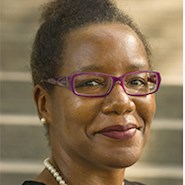
By Margaret M. Mitchell
Like any professionals involved in community design and construction, urban planners must consider the impacts of climate change — present and future — in their designs.
Urban planning — our theme for this issue — involves a variety of professionals: master planners, architects, geotechnical engineers, builders, civil engineers, landscape architects, transportation designers, and agency representatives, among others. And they all must collaborate, ideally from the start of a project, to create communities in which people will want to gather, work, shop, live, and play. At the same time, they have to consider the environmental implications of everything they do. A community that is not resilient to the impacts of climate change will not thrive.
Luckily, civil engineers have the skills to help. By coordinating early with other professionals, civil engineers are helping design green spaces that serve double duty as flood storage and control measures; transportation centers that serve pedestrians and bicyclists as easily as buses and ride-share drivers; and trail systems that reuse existing infrastructure.
In Detroit, a historical train station has been revamped as part of a transportation innovation hub. A multidisciplinary team designed a public park where a train platform used to be, with a parking technology testing center located beneath. Roads around the station are being used to test inductive vehicle charging technologies, and electric, autonomous shuttle buses are being tested nearby. “Planning Urban Mobility,” by senior editor/features manager Robert L. Reid, begins on page 38.
Urban sustainability isn’t limited to the United States, of course. In Curitiba, Brazil, a 60-year-old master plan is still guiding the development of a community built on the principles of social, economic, and environmental wellbeing. Planners and engineers work together to reduce greenhouse gas emissions, protect the region’s biodiversity, promote low-carbon public transportation, and encourage recycling. “Sustainably Urban,” also authored by Reid, begins on page 48.
In their article “Building Communities with Purpose, Vision, and Heart,” on several developments in North and South Carolina, Gary Collins, PLA, and Taylor Critcher, PLA, describe projects that blend ecology and community health with business development. Of the three master-planned developments they describe in their article, which starts on page 56, perhaps the most unusual is an industrial complex at Camp Hall, South Carolina. Although the development does not include residential units at this time, the planners, civil engineers, and landscape architects nevertheless took into consideration the needs of those who will work and do business there. They surveyed the flora and fauna and provided natural areas to serve as habitats for local species, restored hundreds of acres of wetlands, and repurposed abandoned logging roads into walking trails.
And in Ethiopia, the Grand Ethiopian Renaissance Dam will soon be the largest hydropower project in Africa, providing green energy to a country that just 14 years ago could power only about one-third of the population. “The dam promises to more than double the country’s electricity generation capacity, potentially transforming Ethiopia from an energy-deficient nation to a major power exporter in East Africa,” write authors Assefa M. Melesse, Ph.D., P.E., BC.EE, BC.WRE, M.ASCE, and Alemayehu Gebriel, Ph.D., P.E., CFM, M.ASCE, in “Powering East Africa,” which begins on page 66.
Civil engineers who work with urban planners and others on environmentally sustainable projects aren’t just winging it. They are relying on decades of experience designing projects that protect the environment, cut carbon emissions, promote green spaces, and conserve water. Luckily, they have guidelines to follow since the publication of ASCE/COS 73-23 Standard Practice for Sustainable Infrastructure, the only standard of its kind to specifically lay out what it takes to design and build a sustainable infrastructure project. “Setting the Standard for Infrastructure Sustainability,” by contributing editor Jenny Jones, begins on page 74.
What about you? How are you integrating sustainability and climate change resilience into your projects? Write to us at [email protected]. We’d love to hear more.
Margaret M. Mitchell is the editor in chief of Civil Engineering.
This article first appeared in the July/August 2025 issue of Civil Engineering.



